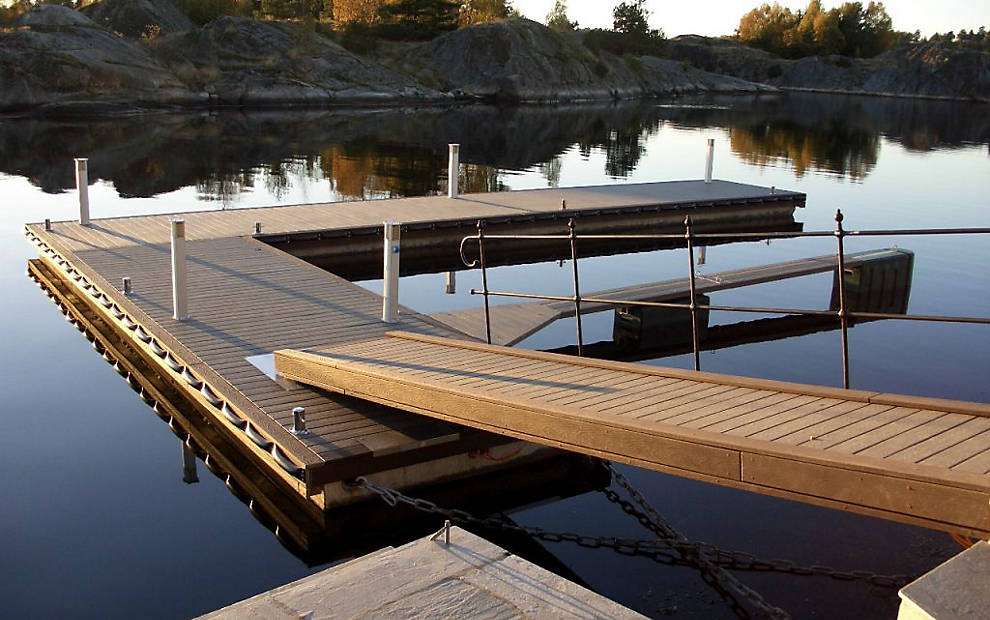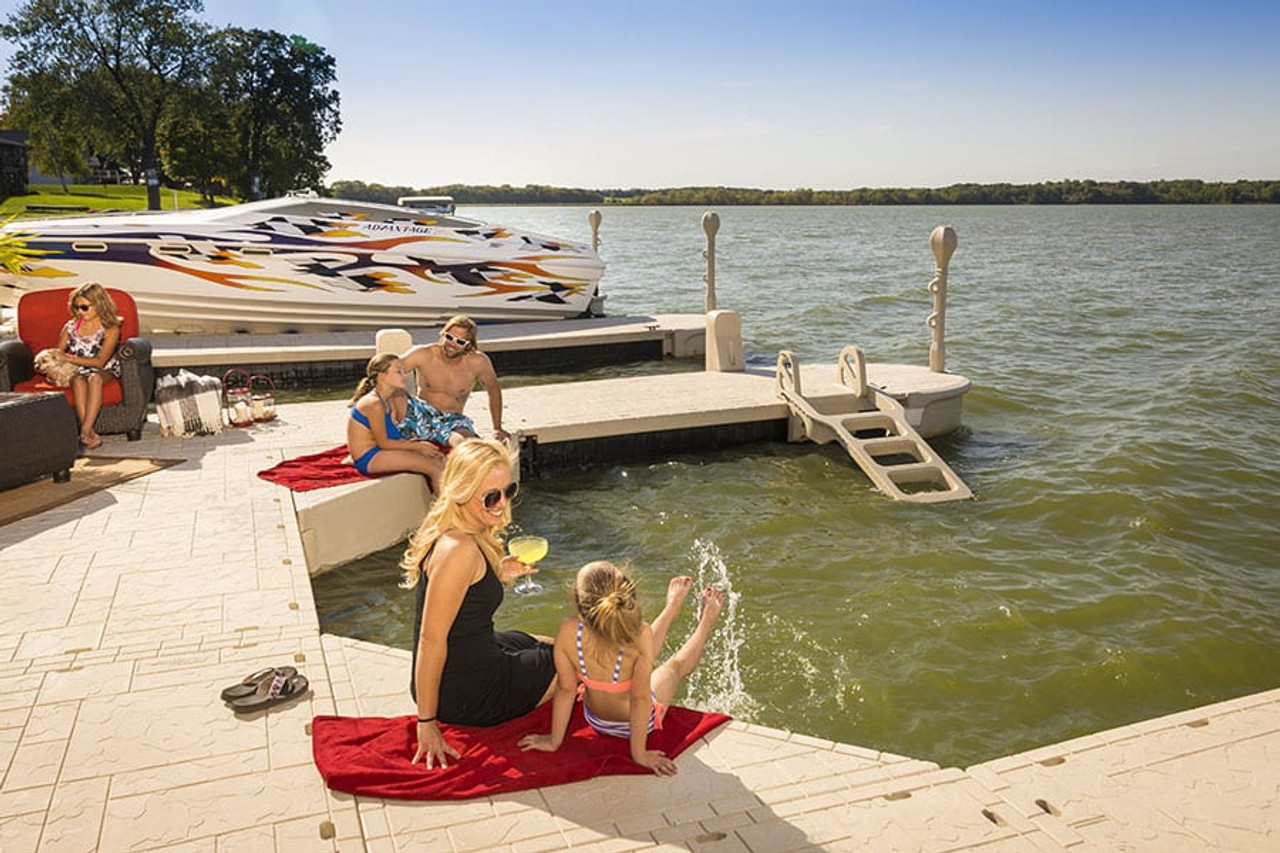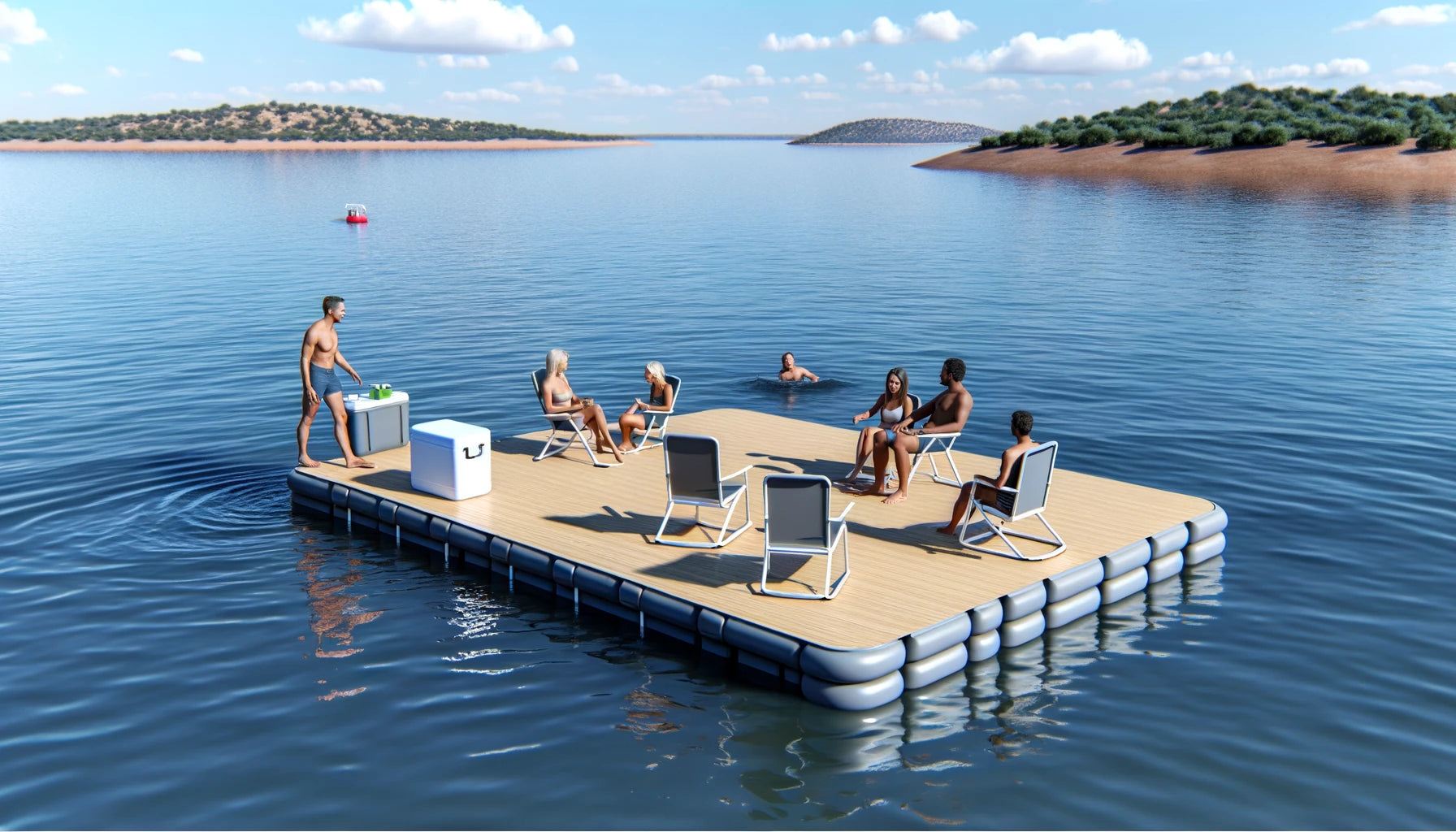Upgrade Your Beachfront With Resilient Floating Docks
Upgrading your beachfront with durable floating docks can significantly improve both capability and aesthetic appeals, providing a flexible remedy for different water tasks. These frameworks are created to adjust to ever-changing water degrees, making certain security and access throughout the periods. With an array of products available, consisting of low-maintenance alternatives and traditional timber, selecting the best dock can enhance your individual design and meet useful requirements. Nonetheless, understanding the nuances of setup and upkeep is critical for making sure long life and efficiency. When making this investment?, what aspects should you consider.
Advantages of Floating Docks
Floating docks deal a multitude of benefits that boost their charm for numerous maritime applications. Unlike conventional fixed docks, floating docks rise and loss with the tide, guaranteeing regular access for watercrafts and boat no matter of environmental conditions.
Furthermore, floating docks are easier to install and move, providing flexibility for short-lived or seasonal usage. Their modular design enables modification to fit details requirements, whether for exclusive marinas, household watersides, or business applications.
Furthermore, floating docks develop minimal disturbance to the marine atmosphere, protecting local communities and minimizing the chance of erosion. They likewise supply improved safety and security for individuals, as their resilient nature offers a more forgiving surface than inflexible frameworks.
Moreover, floating docks can facilitate a diverse variety of activities, such as angling, swimming, and entertainment boating, making them a useful property for waterfront growth. Their adaptability and functionality make floating docks a favored option for a selection of maritime jobs.
Selecting the Right Products
Selecting ideal products for floating docks is crucial to their longevity, performance, and general efficiency. When selecting products, think about aspects such as environmental direct exposure, maintenance requirements, and structural honesty. Typical materials include timber, plastic, aluminum, and composite alternatives, each offering unique advantages and disadvantages.
Timber, while aesthetically pleasing, calls for routine maintenance to avoid rot and degeneration. Pressure-treated timber can improve toughness, but it might still succumb to water damages with time. Plastic floats, often made from high-density polyethylene, are resistant to corrosion and require very little upkeep, making them an appealing option for low-maintenance applications.
Aluminum is another feasible option, recognized for its stamina and lightweight buildings. It is immune to corrosion and can endure rough climate condition, although it may be much more costly than various other materials. Composite products integrate the most effective qualities of wood and plastic, providing a low-maintenance and resistant choice that mimics the look of timber without the associated disadvantages.
Inevitably, the option of material must line up with the planned usage, ecological considerations, and budget restrictions, making certain a useful and resilient floating dock that fulfills your details requirements.
Installment Refine Review
The effective setup of a floating dock depends on cautious planning and execution, making sure that it operates effectively in its designated atmosphere. The initial step entails assessing site conditions, consisting of water deepness, coastline features, and dominating weather patterns, which will certainly notify the dock layout and anchoring index system.
Adhering to the website evaluation, the next stage is to prepare the floating dock components. This consists of setting up the structure, safeguarding floats, and attaching any type of essential equipment. It is critical to ensure that all links are durable and water-resistant to endure aquatic conditions.
Once the dock is constructed, the installment process starts with placing the dock in the water. This can include a crane or other lifting tools, particularly for larger frameworks. Proper placement is necessary for functionality and safety.

Upkeep Tips for Durability
Regular maintenance is essential for making certain the longevity and ideal performance of a floating dock. To accomplish this, start with routine assessments at the very least twice a year, concentrating on the honesty of the dock's framework, including the flotation protection tools and linking equipment. Seek indicators of rust, damages, or wear, and deal with any kind of concerns quickly to stop additional deterioration.
Cleaning up is another important facet of maintenance. Eliminate particles, algae, and barnacles from the dock's surface area to stop unsafe conditions and keep visual charm. Use a soft brush and a mild detergent to stay clear of harming the dock's materials.
In addition, make certain that the dock is correctly secured and protected to endure seasonal modifications in water levels and weather condition problems. Examine the anchoring system for security and make adjustments as necessary.
Enhancing Your Exterior Visual
To develop an aesthetically enticing outside area, incorporating a floating dock can considerably enhance the overall visual of your waterside property. Floating docks are not only practical yet can likewise offer as a striking prime focus that matches the all-natural surroundings - floating dock builder. Readily available in different materials and designs, these docks can be customized to match your home's building design and landscape
The enhancement of attractive aspects, such as integrated lighting or stylish railings, better boosts the dock's visual allure. Take click for more into consideration making use of natural wood coatings, which mix flawlessly with the environment, or choosing modern-day materials like aluminum or composite decking that provide a sleek, modern appearance.
Purposefully placing planters or seating areas on or around the dock can develop welcoming areas that encourage relaxation and pleasure of waterfront views. In addition, integrating shades and structures that integrate with your landscape will create a cohesive aesthetic throughout your outside location.

Conclusion

Upgrading your waterfront with resilient floating docks can substantially enhance both performance and visual appeals, giving a versatile option for numerous water tasks. Unlike typical set docks, floating docks rise and fall with the tide, making certain regular access for boats and watercraft no matter of ecological problems.Selecting suitable materials for floating docks is essential to their long life, performance, and general efficiency.Once the dock is constructed, the setup process starts with positioning the dock in the water.In recap, floating docks deal various advantages, including adaptability to water level adjustments and a selection of material choices.